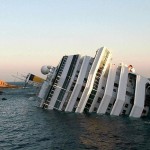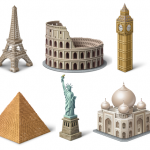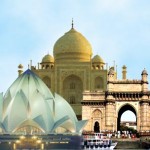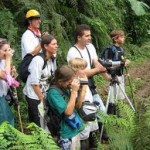Posts Tagged ‘Tourism’

Failure of plans in tourism industry, like any other industry is not a rare occasions. Plans may go wrong as a result of the impact of external environment, as well as, mistakes and shortcomings taken place in planning process. Shortcomings during the planning process resulting the in the failure of plans may take place in the following manners: Mistakes may occur during the first stage of planning process, which is study recognition and preparation. For example, management may decide to conduct relevant study on regional levels, when the scope of the study necessitates data collection on the national level, thus compromising the quality of the plan from the outset of the planning process. Moreover, individuals responsible for tourism planning may fail to formulate SMART objectives. In this case, objectives may be too vague and lack deadlines, and it would be not possible to assess the level of achievement of these objectives in an appropriate manner. Shortcomings planning process can also take place during the stage of survey of existing data. Specifically, such shortcomings may involve collection of outdated data, collection of irrelevant data, collection of data from biased and unreliable sources etc. Arguably, implementation of new surveys can be specified as one of the major stages in tourism planning process that accommodates the most mistakes. Such mistakes may be caused due to the incompetence and the lack of previous experiences and they may involve selection of inappropriate data collection tools, sampling mistakes, and others. Analysis of secondary and primary data can be mentioned as another stage in the planning process in tourism where mistakes can happen possibly resulting in the failure of the plan. Mistakes in data analysis may involve failure to identify common patterns within the information provided by survey respondents, failure to achieve a required level of depth…

Planning process for tourism industry comprises the following stages: 1. Study recognition and preparation. The first stage in planning process is associated with the recognition of the need for the strategy in order to obtain and/or increase competitive advantage to contribute to long-term growth. Depending on available budget and a range of other factors, studies may be planned to be conducted on local regional or national levels. 2. Setting of objectives or goals for the strategy. Goals and objectives need to be formulated according to SMART principle, where the acronym stands for specific, measurable, achievable, realistic and time-bound. 3. Survey of existing data. The survey of existing data or secondary research can be done through analysing relevant information available on wide range of tourism reviews websites, newspapers, magazines, books and other online and offline published materials. The types of data that need to be collected from these sources include, but not limited to patterns of tourist behaviours, availability and quality of accommodation, impacts of environmental factors, social and cultural characteristics of tourism destinations etc. Importantly, the survey of existing data should cover all three directions: the state of issues at present, projected changes in the state of issues, and outline of principles for monitoring for the future. 4. Implementation of new surveys. New surveys are conducted in order to obtain fresh data and/or fill the information gap in relation to the tourism industry. Surveys can be conducted through online or offline questionnaires or interviews. When conducting the survey it is very important to select respondents i.e. sample group members from amongst target customers for tourism destinations. 5. Analysis of secondary and primary data. In case of questionnaires, data analysis can be done through representing collected information in bar-charts, pie-charts etc. In case of interviews, on the other hand, data analysis may involve finding common patterns…

The term of tourism can be defined as “the temporary movement of people to destinations outside their normal places of work and residence, the activities undertaken during their stay in those destinations, and the facilities created to cater to their needs” (Gunn, 2002, p.9, as taken from Mathieston and Wall, 1982), and tourism has been assessed as the largest industry in the global scale. Tourism provides both, economic and non-economic benefits to any given country. Economic benefits of tourism to a national economy is straightforward and it is associated with creation of new jobs, decrease in the levels of unemployment, stimulation of production of products and services to be consumed by tourists and others. Non-economic benefits of tourism, on the other hand, include facilitation of cultural exchanges, contribution to the levels of knowledge, and facilitation of communication. Strategy can be defined as “the determination of the basic long-term goals and objectives of an enterprise, and the adoption of courses of action and the allocation of resources necessary for carrying out these goals” (Campbell et al., 2012, p.12, taken from Chandler, 1962). Accordingly, strategic planning can be explained as “the process of developing approaches to reach a defined objective” (Axson, 2010, p.25). Tourism industry has become more competitive than ever before, and therefore the importance of strategic planning for tourism industry is greater than ever before. The primary aim of the tourism industry relates to the achievement of adequate balance between the interests of public and private sectors. Three general principles of planning for tourism can be specified as anticipation, regulation and monitoring. Anticipation involves making projections about the future state of the tourism on the basis of relevant secondary and primary data. Regulation, on the other hand, is closely associated with the levels of regulation of tourist and affiliated organisations…

“Tourism is the world’s largest industry and makes a major contribution to the economies of most developed and developing countries” (Claire and Haven-Tang, 2005, p.1). At the same time, tourism organisations are facing a set of significant challenges they have to deal with in order to ensure their long-term growth. Specifically, quality management can be highlighted as one of the most important challenges for tourism organisations, and the importance of this challenge is increasing with ever-increasing customer expectations. Although the importance of quality in terms of long-term business growth in tourism organisations is widely understood by industry researchers and practitioners, yet no clear and universal recommendations exist regarding how the quality management aspect of the business can be improved in efficient ways. This article critically analyses the significance of quality management within the context of managing a tourism organisation. The article starts with discussions about the importance of managing quality in a tourist organisation, followed by a brief analysis of challenges in ensuring a high quality. Moreover, specific strategies are also described in this paper that tourism organisations can use in order to improve quality management. The Importance of Managing Quality in a Tourism Organisation Managing quality is crucially important for tourism organisations along with other types of businesses. The significance of the quality management issue for tourism organisations has dramatically increased in recent years due to the highly intensified level of competition in the industry caused by the globalisation, low barriers for entering into the industry and a range of other factors. Moreover, “service quality is an intangible, but crucial area of interest to travel service providers” (Morais and Chick, 2005, online) because it is one of the most efficient bases for creating competitive edge in the marketplace. A great level of dedication to such an approach has enabled…

The definition of food tourism is straightforward and there is no dramatic contrast among various definitions offered by various authors. A typical definition of food tourism would is like a “visitiation to primary and secondary food producers, food festivals, restaurants and specific locations for which food tasting and/or experiencing the attributes of specialist food production regions are the primary motivating factors for travel” (Buhalis and Costa, 2006, p.137). To make it more simple, it can be stated that food tourism is travelling to other destinations in order to consume their food. First of all, there is a consensus among the vast majority of authors the works of whom have been studied as a part of literature review that the topic of food tourism is not new. At the same time, “yet it is such an integral part of the experience that it is only in recent years that it has become a subject of study on its own right” (Hall and Sharples, 2003, p.1). Gretzel et al (2010) link this recent rise of popularity of food tourism to technological advancement in general, and the increasing role of internet in particular, by stating that once it became easier for people to get information of various types from internet including culinary and cuisine of other nations, more and more people started to travel to other countries for the sake of trying their food. Moreover, some authors have offered explanations about the growth of food tourism by stating the importance of the tourism destination. Specifically, it has been stated that “as the motivation to experience food and while travelling growth, destinations with appropriate levels of food and wine resources are able to develop increasingly sophisticated food and wine experiences, which may lead to the emergence of gourmet tourism” (Chen, 2009, p.165) Among a…

Symbol has been defined by Smith (2009) as a material object, written sign or something invisible that is used to represent something else. “The idea of ‘binding a matter with the matter’s image” is one that speaks to a more visceral aspect of symbolism and suggests a dimension of relational meaning for symbols that can play no comparable role in our understanding of a simple phonetic latter in the modern sense” (Scranton, 2010, p.47). According to Brodskaya (2007) in literature symbolism can be in forms of damnation, salvation, and reincarnation. Currently symbols are used for commercials purposes as well by many companies through associating their brands with a particular symbol or logo. Consumption can be interpreted as buying, using and interpretation of things (Aldridge, 2003) and in this sense it is a different term from a traditional economic definition of consumption. “Consumption involves consuming ideas, images on television and in advertisements” (Bocock, 1993, p.33). There are debates about the role and scope of the notion of consumption, but generally, many researchers agree on the current meaning of consumption in a way that modern identities are structured around the experience of consumption (Dunn, 1998). An interesting point relating to the issue of consumption is that it is very difficult for people to distinguish their ‘true’ and ‘false’ needs. True needs are air, water, food, sleep, and sex, without which it is impossible to live and people have to ‘consume’ them regularly, whereas ‘false’ needs are the ones created by marketing professionals, which makes people want to ‘consume’ their products or services. For instance, thirst for Coca Cola is a ‘false’ consumption need created by marketers. This is possible because people tend to express their desire through their consumption patterns. For example, if an individual desires to become a senior level executive,…

Introduction Tourism has been one of the biggest and the most profitable industries in 20th century and this industry is moving towards the new level in 21st century with new variations and services included. Ecotourism is one of the variations of tourism that has been attracted mixed opinions from business academics and practitioners alike. Ecotourism can be defined as “travel to enjoy the world’s amazing diversity of natural life and human culture without causing damage to either” (Tickell, 1994, p.ix) On one hand, there are authors who argue that ecotourism is beneficial to tourists and local society in many levels pointing to learning opportunity for tourists and economic benefits to ecotourism destinations along with a range of other perceived benefits. On the other hand, there are others who point to the occasions were people were misplaced, local nature damaged, as well as socio-economic inequalities as the negative effects of ecotourism. Wearing and Neal (2009, p.6) mention two main facets of inequality as travelling to unspoilt natural environments and experiencing natural environment as the purpose of the travel. Emerging around 1980’s, ecotourism is believed to be related to nature-based, environmental education and sustainable development. However, there are some people who are highly sceptical about the benefits of ecotourism, and claim that it produces socio-economic inequalities. The Benefits of Ecotourism Development Ecotourism offers range positive impacts for tourists, host destinations, and the science and environment in general. The impact of ecotourism on the designated areas where ecotourism has been promoted is not only a marginal activity to finance the protection of the environment, but is also a major industry of the national economy. Tuohino and Hynonen (1991) mention the fact that due to rapid growth of the ecotourism in areas like Costa Rica, Ecuador, Nepal, the local communities are also benefiting…
